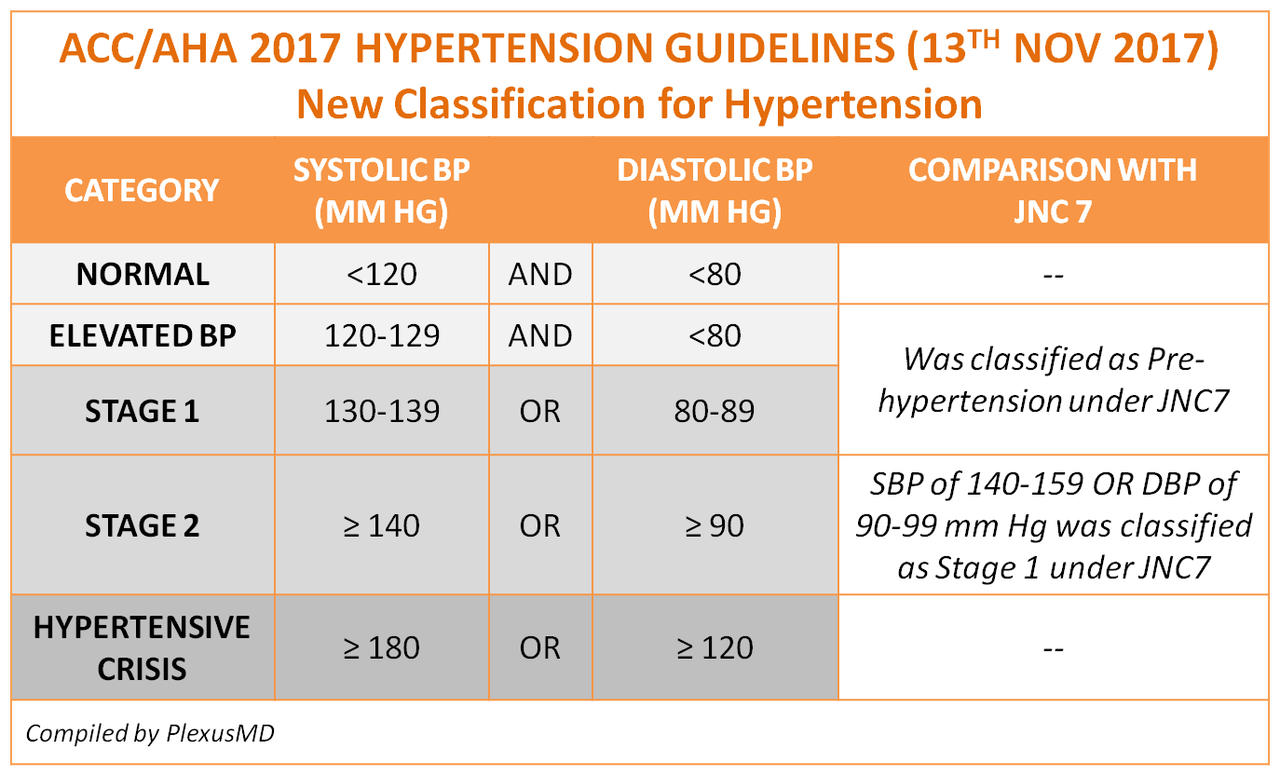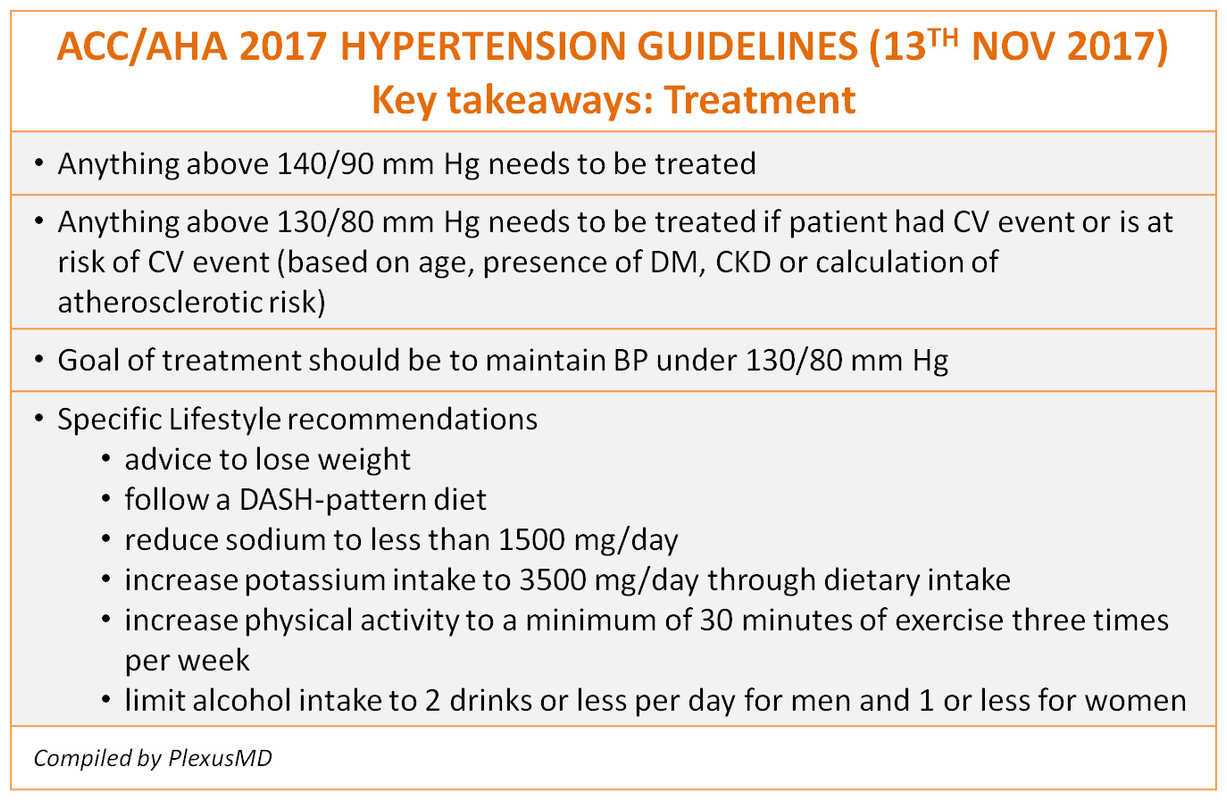Major changes announced in 2017 Hypertension guidelines by AHA/ACC
The new guideline, updating the currently active JNC 7 guidelines have lowered the definition of Stage 1 HT to 130/80 mm Hg
The American College of Cardiology and The American Heart Association released the updated ACC/AHA Hypertension guidelines yesterday at the AHA 2017 Scientific Sessions and simultaneously published in Journal of American College of Cardiology and Hypertension. As per ACC, this is “the first comprehensive set since 2003”.
The new guidelines have recommended a target BP of130/80 mm Hg during treatment and classified SBP 130-139 mm Hg OR DBP 80-89 mm Hg as Stage 1 Hypertension which was earlier classified as Pre-hypertension.

Key takeaways:
- New BP classification system (see attached image)
- Removed “Pre-hypertension” category which existed under JNC7 guidelines
- Stage 1 BP now starts at SBP 130mm Hg vs.140mm Hg earlier as per JNC7
- 140/90 mm Hg which was Stage 1 under JNC7 now classified as Stage 2 under the ACC/AHA 2017 guidelines
- Lower end of Pre-hypertension reclassified as Elevated BP (SBP 120-129 mm Hg AND DBP <80 mm Hg)
- Higher end of Pre-hypertension reclassified as Stage 1 BP (SBP 130-139 mm Hg OR DBP 80-89 mm Hg)
- Medication for Stage 1 HT only to be prescribed if a patient has already had CV event or has >10% estimated risk of Atherosclerotic Cardiovascular disease (based on age, presence of DM, CKD or atherosclerotic risk
- Goal of treatment should be to bring BP under 130/80 mm Hg
- Guidelines recongise that many patients may need 2 or more medications and compliance may be better with combined dosages

Lifestyle modification recommendations
Patients classified as Stage 1 HT who do not meet the above criteria are only to be recommended Lifestyle modification. Specific recommendations include
- advice to lose weight
- follow a DASH-pattern diet (DASH diet eating plan is a diet rich in fruits, vegetables, low fat or nonfat dairy; it also includes mostly whole grains, lean meats, fish and poultry, nuts and beans. It is high fiber and low to moderate in fat. In addition to lowering blood pressure, the DASH eating plan lowers cholesterol and makes it easy to lose weight.)
- reduce sodium to less than 1500 mg/day
- increase potassium intake to 3500 mg/day through dietary intake
- increase physical activity to a minimum of 30 minutes of exercise three times per week
- limit alcohol intake to 2 drinks or less per day for men and 1 or less for women
The new guidelines lead to a substantial increase in the prevalence of Hypertension with 45.6% of US population now being classified as Hypertensive vs. 31.9% earlier under JNC 7 i.e. 10 cr more Hypertensive patients in the US alone.
About the ACC/AHA guidelines
The new guidelines were developed by ACC and AHA with nine other health professional organizations and were written by a panel of 21 scientists and health experts who reviewed more than 900 published studies. They are the successor to the Seventh Report of the Joint National Committee on Prevention, Detection, Evaluation and Treatment of High Blood Pressure (JNC7), issued in 2003 and overseen by the National Heart, Lung, and Blood Institute (NHLBI). In 2013, the NHLBI asked the AHA and ACC to continue the management of guideline preparation for hypertension and other cardiovascular risk.